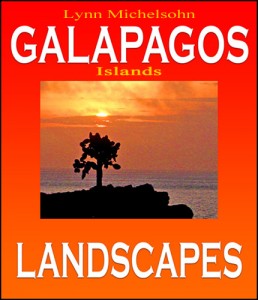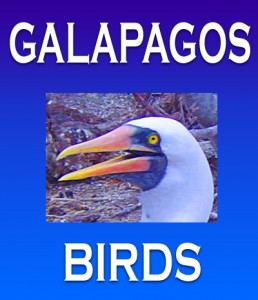Charles Darwin, Naturalist, visited James Island (also called Isla Santiago or San Salvador) in the Galapagos Archipelago in 1835
James Island Today . . .
This medium-sized island (also called Santiago or San Salvador) in the middle of the archipelago is visited by most tourists because of its proximity to Isla Santa Cruz where most tours start.
In the early 1900s a flow of pahoehoe (smooth, ropey) lava covered much of the ground near Sulivan Bay.
Santiago was long a popular stop for pirates and whalers. Now uninhabited, Santiago’s last settlers only abandoned its bankrupt salt mine operation in the 1960s.
By 2000 the island was overrun by 100,000 feral goats, descendents of four supposedly released by U.S. Navy Captain David Porter during the War of 1812. These were completely eradicated by 2005, as was the smaller feral donkey population. A 28 year project to eradicate 18,000 feral pigs had been completed in 2001.
Since the eradication of these large invasive animals, native vegetation has since made an amazing recovery, followed by native animals. The island supports a diversity of birds, tortoises, iguanas, sea lions and fur seals, invertebrates, and plants.
In 1835 . . .
After charting Chatham, Charles, and Albemarle Islands, the Beagle approached James Island. They had found no good sources of fresh water except on Chatham Island so were preparing to return there to restock the ship’s supply. Captain Fitz-Roy later wrote, “As Mr. Darwin anxiously desired to see as much as possible of the productions of this central and large island, he was landed, accompanied by Mr. Bynoe [Assistant Surgeon], besides his servant [Syms Covington] and H. Fuller [Captain Fitz-Roy’s steward], to remain until the Beagle’s return.”
Darwin wrote in The Voyage of the Beagle:
October 8th.—We arrived at James Island: this island, as well as Charles Island, were long since thus named after our kings of the Stuart line.
Mr. Bynoe, myself, and our servants were left here for a week, with provisions and a tent, whilst the “Beagle” went for water.
We found here a party of Spaniards who had been sent from Charles Island to dry fish and to salt tortoise-meat.
About six miles inland and at the height of nearly 2000 feet, a hovel had been built in which two men lived, who were employed in catching tortoises, whilst the others were fishing on the coast. I paid this party two visits, and slept there one night.
As in the other islands, the lower region was covered by nearly leafless bushes, but the trees were here of a larger growth than elsewhere, several being two feet and some even two feet nine inches in diameter.
The upper region, being kept damp by the clouds, supports a green and flourishing vegetation. So damp was the ground, that there were large beds of a coarse cyperus, in which great numbers of a very small water-rail lived and bred.
While staying in this upper region, we lived entirely upon tortoise-meat: the breast-plate roasted (as the Gauchos do carne con cuero), with the flesh on it, is very good; and the young tortoises make excellent soup; but otherwise the meat to my taste is indifferent.
One day we accompanied a party of the Spaniards in their whale-boat to a salina, or lake from which salt is procured. After landing we had a very rough walk over a rugged field of recent lava, which has almost surrounded a tuff-crater at the bottom of which the salt-lake lies.
The water is only three or four inches deep and rests on a layer of beautifully crystallised, white salt. The lake is quite circular, and is fringed with a border of bright green succulent plants; the almost precipitous walls of the crater are clothed with wood, so that the scene was altogether both picturesque and curious.
A few years since the sailors belonging to a sealing-vessel murdered their captain in this quiet spot; and we saw his skull lying among the bushes.
During the greater part of our stay of a week the sky was cloudless, and if the trade-wind failed for an hour the heat became very oppressive. On two days the thermometer within the tent stood for some hours at 93°; but in the open air, in the wind and sun, at only 85°.
The sand was extremely hot; the thermometer placed in some of a brown colour immediately rose to 137°, and how much above that it would have risen I do not know for it was not graduated any higher. The black sand felt much hotter, so that even in thick boots it was quite disagreeable to walk over it.
(This selection comes from Lynn Michelsohn’s forthcoming book, In the Galapagos Islands with Charles Darwin.)

Available from these booksellers

Available from these booksellers
You might also enjoy these books by Lynn Michelsohn that include Herman Melville’s descriptions of the Galpagos Islands and Moses Michelsohn’s nature photographs
